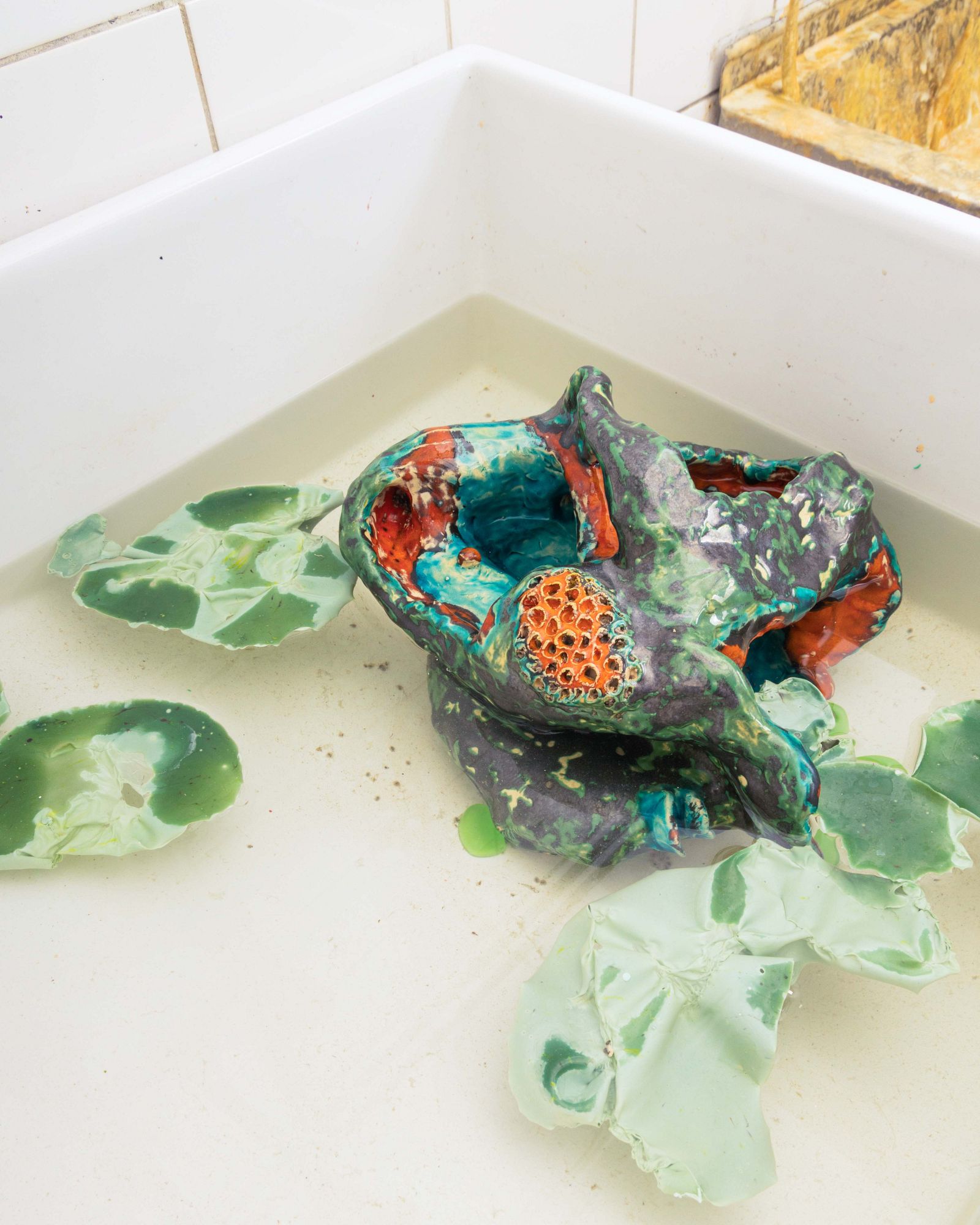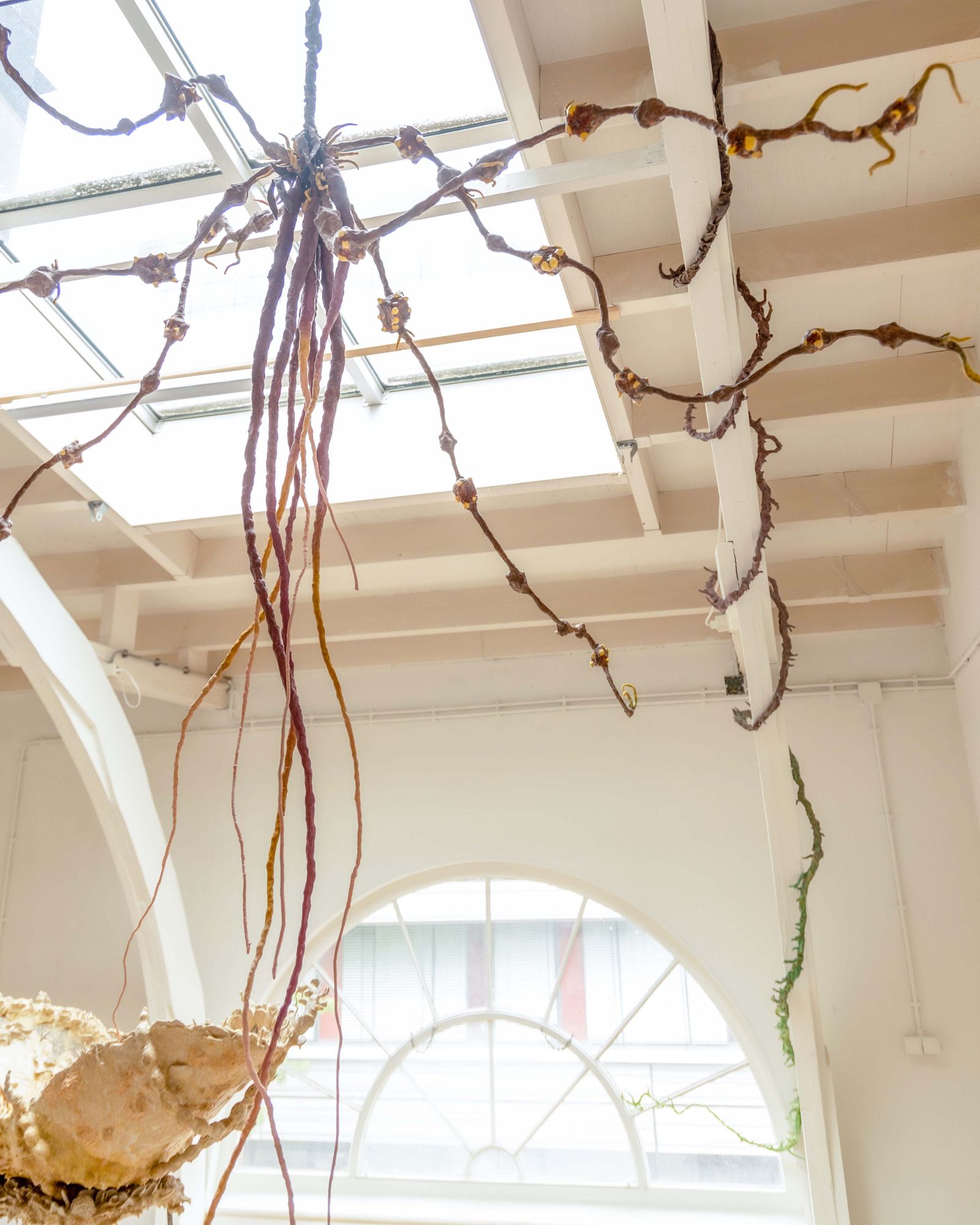
Silke Riis
The 21st century fills me with a sort of hopeful hopelessness.
We are facing years of extreme changes, you and I, and we will live to see the world ecologically shift. For the past year, I have been imagining what this shift could look like, speculating about a time “pre-post-human”; The time right before our extinction. Many roads could lead to this point, so with my installation “Habitat, it dwells”, I have chosen to focus on the acceleration of climate zone shifts we are currently facing, and its consequences for habitats.
Using a self-developed material-technique that causes my sculptures to slowly decay, I invite you into a scenery of ephemeral models, inhabiting room BD.105. Offering to some a utopian, to others a dystopian glimpse into the future, I try to translate my own anxieties and hopes, combining a sense of magical beauty with horror in the aesthetics of each sculpture. My aim is not to educate on climate change, since I think we are way past the need for that, but instead offer composure in the fantasy of our demise.
I at least found peace in understanding that life literally goes on without us; How habitats forever dwell, no matter how many inhabitants come and go, evolve or go extinct.


The sculptures are made with a material-technique that I have developed myself, combining nature latex, unfired clay, metal structures and in some cases glazed ceramics. This creates an ephemeral material, causing the sculptures to change and decay over time. I work with these materials since I believe they are a reflection of the time we live in:
A reminder of mortality.
By treating my artworks like bouquets of flowers, something widely accepted and appreciated for its beautiful temporality, I want to put a focus on how nothing will, nor should, last forever.
Each model is inspired by already existing species, often combining critically endangered species with more common ones. For instance, the hanging piece “Dutchman’s potatoes” is inspired by common potatoes and the endangered variety of dutchman’s pipe, aristolochia tricaudata.




A study from April this year, led by senior author Paul Dirmeyer, climate scientist at George Mason University, projects that by 2100, 38%-48% of Earth's landmass will transition to new climate zones, with Europe facing the greatest impact of 88%. This means that during the next 80 years, the rate of change will accelerate visibly, leaving little time for vulnerable species as well as agriculture to adapt.
This study is based on the latest generation of global climate models from the CMIP6 in combination with the previous models from CMIP5 and observation, applied to the Köppen-Geiger climate classification.
To read more, visit: https://doi.org/10.1029/2022EF002972 (Includes an abstract, key-points, and plain-language summary)
Documentation by my fellow graduate, Aaryan Sinha